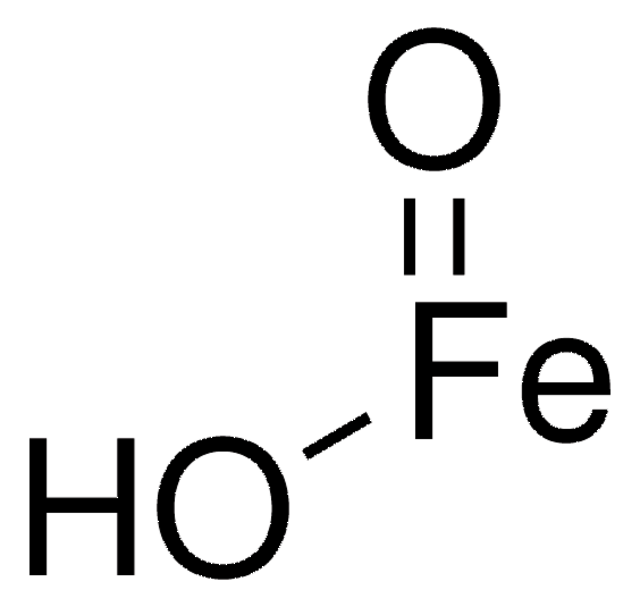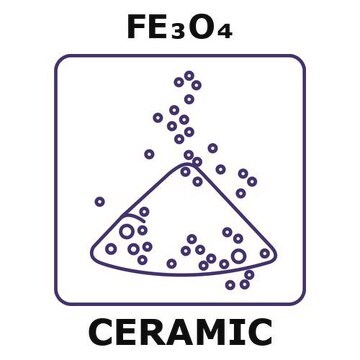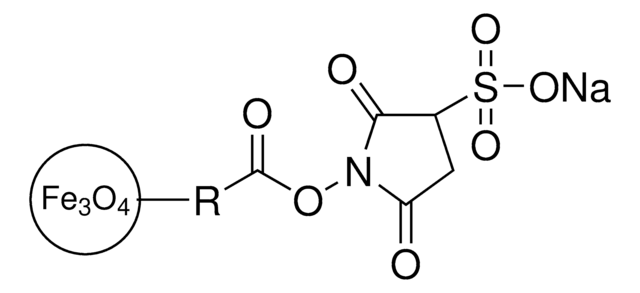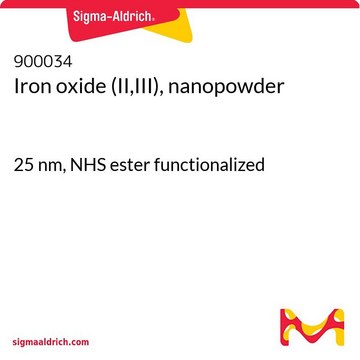おすすめの製品
アッセイ
97% trace metals basis
フォーム
nanopowder
spherical
表面積
6-8 m2/g , estimated
粒径
50-100 nm (SEM)
mp
1538 °C (lit.)
密度
4.8-5.1 g/mL at 25 °C (lit.)
かさ密度
0.84 g/mL
アプリケーション
battery manufacturing
SMILES記法
O=[Fe].O=[Fe]O[Fe]=O
InChI
1S/3Fe.4O
InChI Key
SZVJSHCCFOBDDC-UHFFFAOYSA-N
類似した製品をお探しですか? 訪問 製品比較ガイド
詳細
アプリケーション
アナリシスノート
保管分類コード
11 - Combustible Solids
WGK
nwg
引火点(°F)
Not applicable
引火点(℃)
Not applicable
個人用保護具 (PPE)
dust mask type N95 (US), Eyeshields, Gloves
適用法令
試験研究用途を考慮した関連法令を主に挙げております。化学物質以外については、一部の情報のみ提供しています。 製品を安全かつ合法的に使用することは、使用者の義務です。最新情報により修正される場合があります。WEBの反映には時間を要することがあるため、適宜SDSをご参照ください。
労働安全衛生法名称等を表示すべき危険物及び有害物
名称等を表示すべき危険物及び有害物
労働安全衛生法名称等を通知すべき危険物及び有害物
名称等を通知すべき危険物及び有害物
Jan Code
637106-BULK:
637106-250G:4548173944869
637106-25G:4548173944876
637106-100G:4548173944852
637106-VAR:
この製品を見ている人はこちらもチェック
資料
Professor Randal Lee (University of Houston, USA) discusses design considerations for iron oxide magnetic nanospheres and nanocubes used for biosensing, including synthetic procedures, size, and shape. The effects of these variables are discussed for various volumetric-based and surface-based detection schemes.
Professor Randal Lee (University of Houston, USA) discusses design considerations for iron oxide magnetic nanospheres and nanocubes used for biosensing, including synthetic procedures, size, and shape. The effects of these variables are discussed for various volumetric-based and surface-based detection schemes.
An article concerning self-propagating reactions induced by mechanical alloying, presented by Sigma-Aldrich.com.
Currently, magnetic nanoparticles (MNPs) are attracting a lot of attention because of the possibility of many novel applications, especially in biomedical research.
ライフサイエンス、有機合成、材料科学、クロマトグラフィー、分析など、あらゆる分野の研究に経験のあるメンバーがおります。.
製品に関するお問い合わせはこちら(テクニカルサービス)





